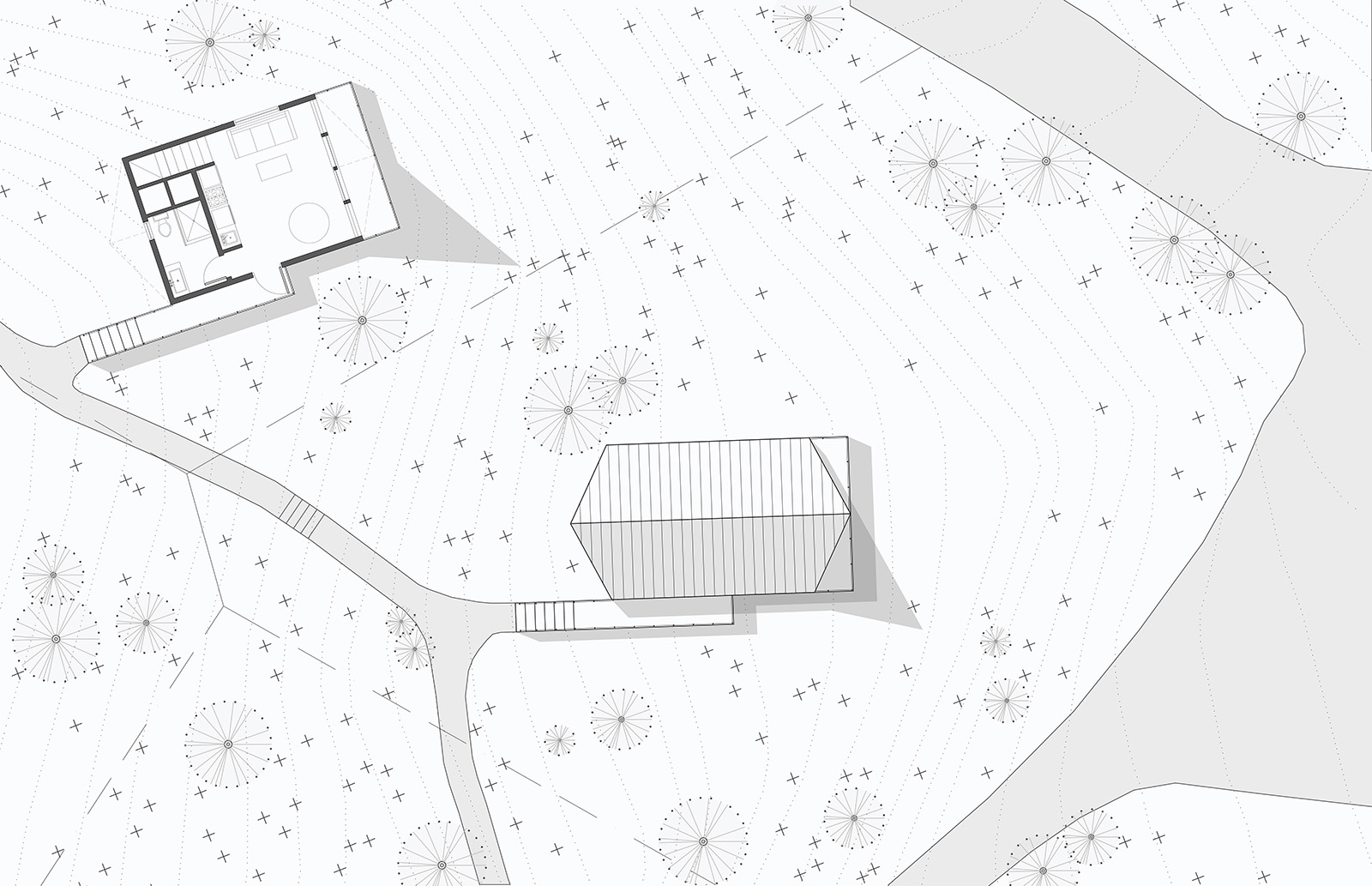CABIN A
LOCATION: BRYSON CITY, NC
CLIENT: FIVE STAND DEVELOPMENT
SIZE: 732 sf
STATUS: DESIGN
THE PROBLEM:
HOW TO GET DENSITY WITH A SMALL FOOTPRINT ON A STEEP SLOPE WITH A LIMITED BUDGET
The original proposal was for a series of small cabins, as the lack of on-site sleeping accommodations present some of the biggest challenges to the Nantahala Outdoor Center today. Cabin A was the first and smallest of the cabin designs. The directive was to create a highly efficient cabin of less than 800 square feet that would also accommodate 8-10 people, all the while keeping the budget very low, and working with the steep, forested terrain.
Given the constraints of the project, we suggested a modern interpretation of an A-Frame building, as it solved a number of issues, as well as celebrated the landscape and the spirit of the outdoor adventure movement. As a design solution, it would allow us to maximize square footage as we could inhabit the roof and accommodate up to 10 people. As the walls of the A-Frame are also the roof, the form naturally eliminates material redundancies. Meanwhile, the A-Frame shares formal qualities with that of traditional Cherokee construction (local to the area), and to the geometries of the canoe and kayak, which also lent great tectonic potential. Looking at ideas of ribbing, skin, and planking – the structure acts as the architecture.
Meanwhile, to keep costs down, we oriented the buildings vertically, built up as opposed to cut into or projecting out over the mountain. We also relied on as many off the shelf materials as possible, with many elements pre-fabricated off site. In doing so, we could also minimize our impact on the landscape. The cabin could be surgically inserted into the forest without eliminating / disturbing many of the old growth trees, beginning with the installation of the structural steel foundation (pre-fabricated off site).
From the interior, the verticality of the roof rafters also mirrors the surrounding trees. Foundational piers were exaggerated to also mimic the surrounding trees so the cabins slip into the woods and quietly reside within the canopy. This treehouse aspect of the design also speaks to the spirit of the outdoor adventure spirit, as the NOC offers entire experiences above ground – including one of the largest zip lines in the region and a number of canopy tours.
As an assembly of buildings perched above the terrain, these modern cabins are intended to create a striking impression for residents and visitors alike. Lit up at night, these small buildings create a romantic backdrop to the already magical experience of the river, hills and trails and the authenticity of the Nantahala Outdoor Center.
Program:
Cabin A is a two and half-story unit with 732 square feet (672 sf excluding the loft) that sleeps 8-10 people. An innovative layout maximizes efficiencies: the first floor includes a living area, kitchen, and a bathroom tucked under the stairs. The second story includes two bedrooms large enough to accommodate a queen sized bed and twin bed in each room. A ladder leads up to a cozy third story loft with additional sleeping room for two.
Building Details:
The unique details of the interior make for a memorable weekend getaway. Sliding glass doors create an indoor/outdoor space between the living room and deck – granting a true sense of living with nature. A large glass window lets in canopy filtered light while a private lookout deck provides expansive views of campus. As you walk up the stairs, you enter into a dramatic double-height bedroom. Exposed wood trusses spanning the second and third floors (also seen through the windows of the front façade), suggest being nestled within the hull of a wooden canoe. Approaching the house from the base of the hill, you can also see the floor joists underneath which are painted rich contrasting colors
Structure and Assembly:
The structure is composed of six steep pipe columns that support a stick frame construction with wood frame trusses. See construction assembly sketches in subsequent pages for details.
Materials:
Standing Seam Metal Roof
Narrow, Vertically Oriented Hardi Plank Siding
Aluminum Windows (storefront sliding glass door system on ground floor)
Steel Pipe Columns
Steel Railings and Cable Cross-Bracing
For Details,click here.
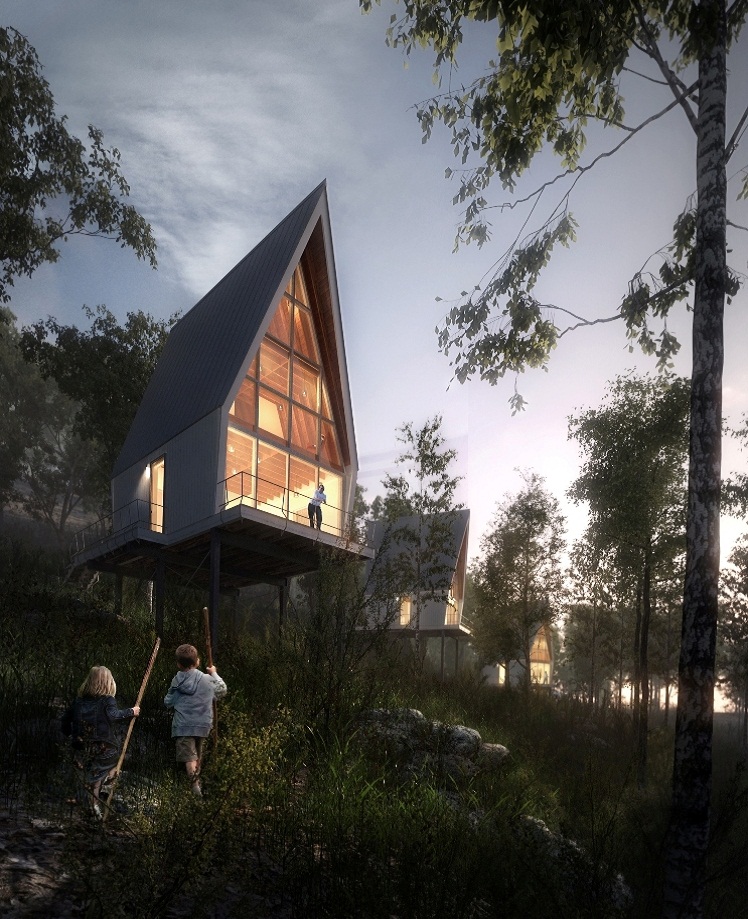
Rendering. Photo Credit: Seiji Anderson
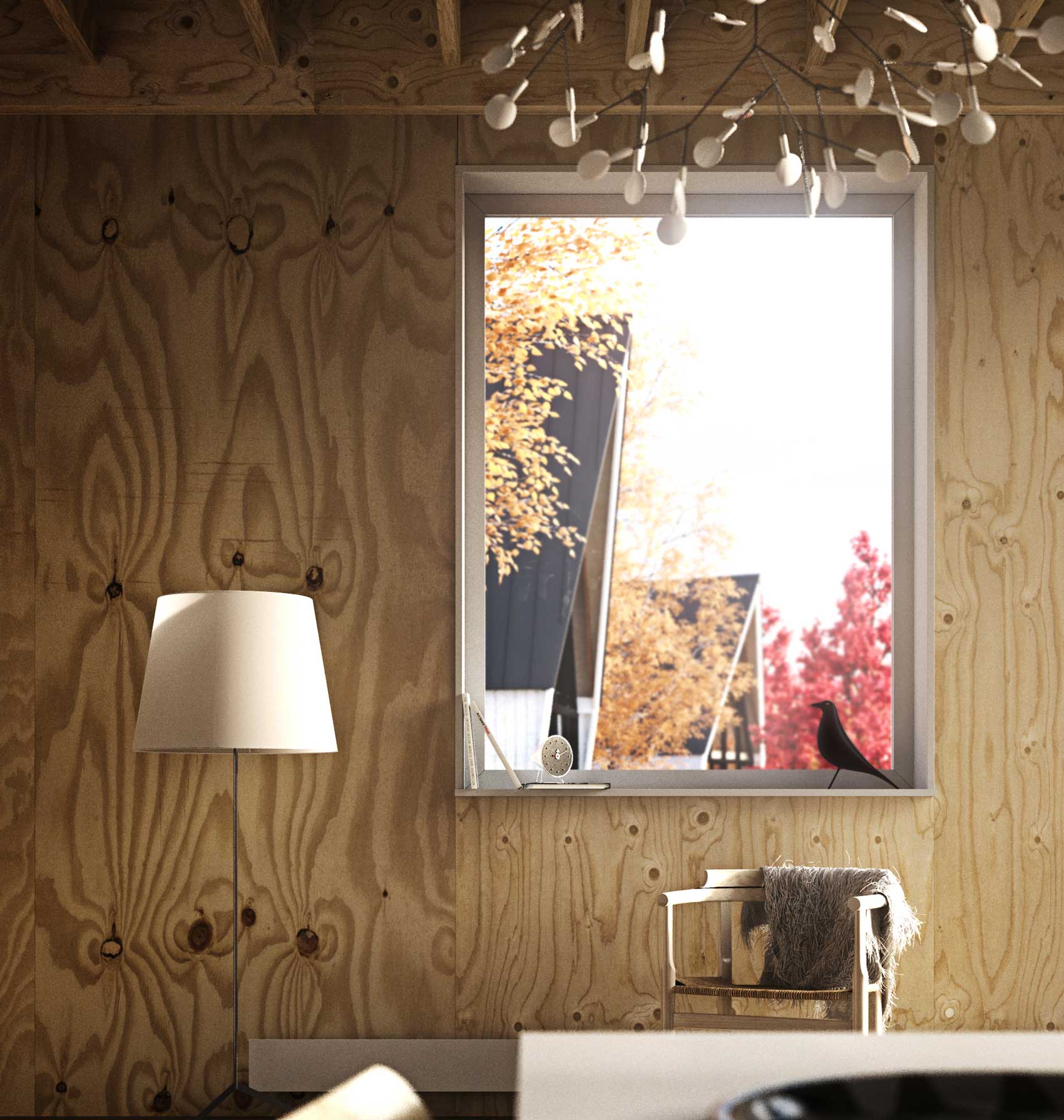
Rendering. Photo Credit: Seiji Anderson
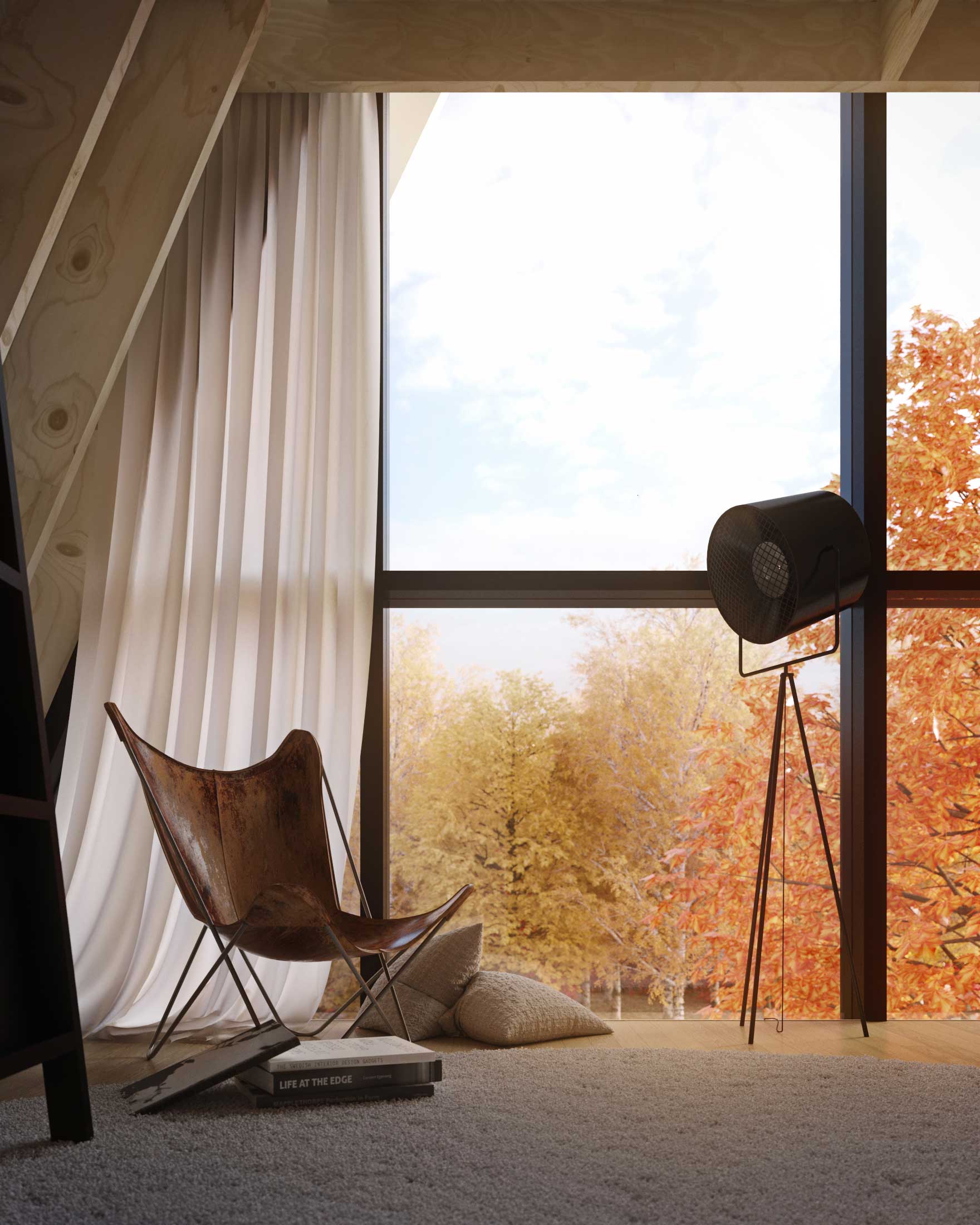
Rendering. Photo Credit: Seiji Anderson
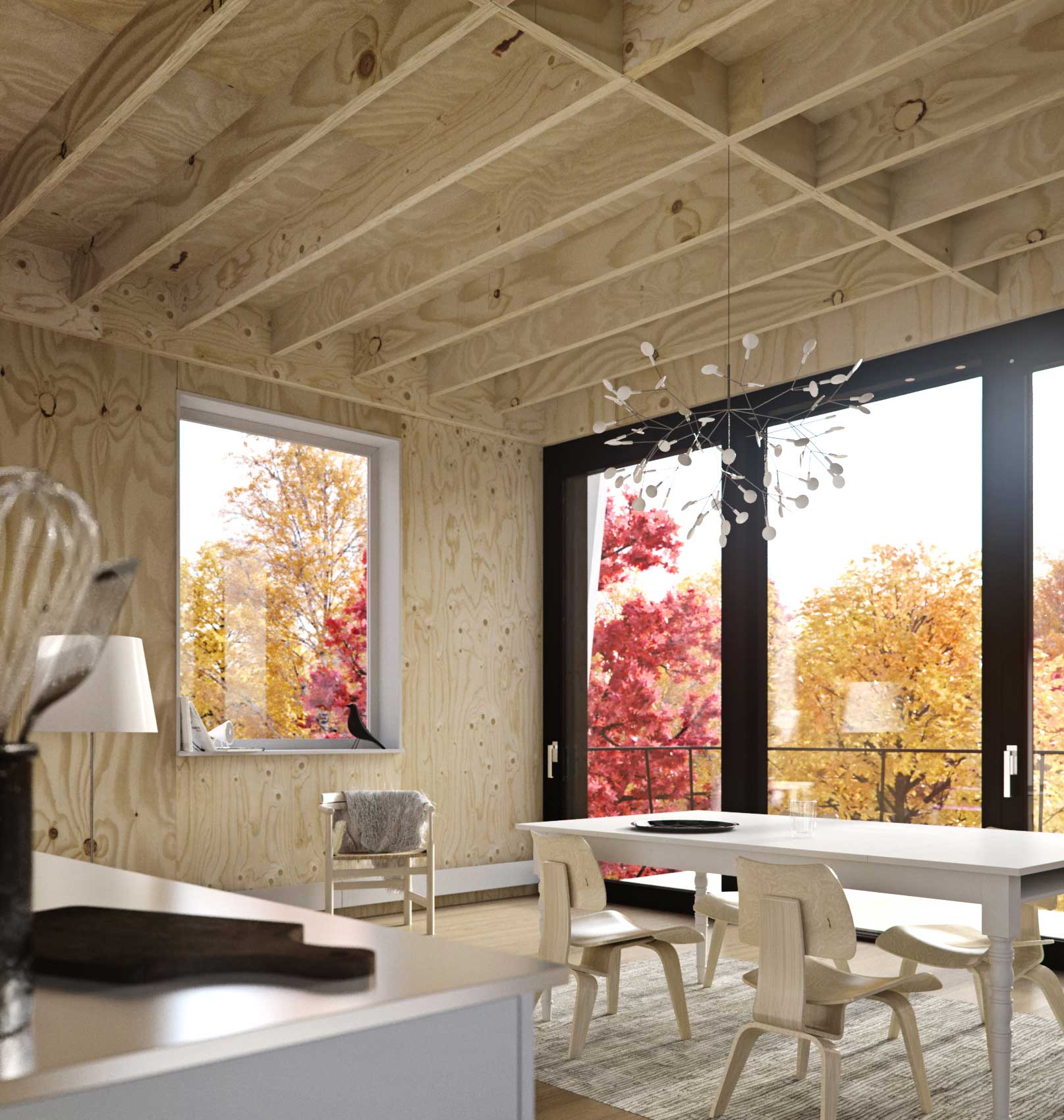
Rendering. Photo Credit: Seiji Anderson
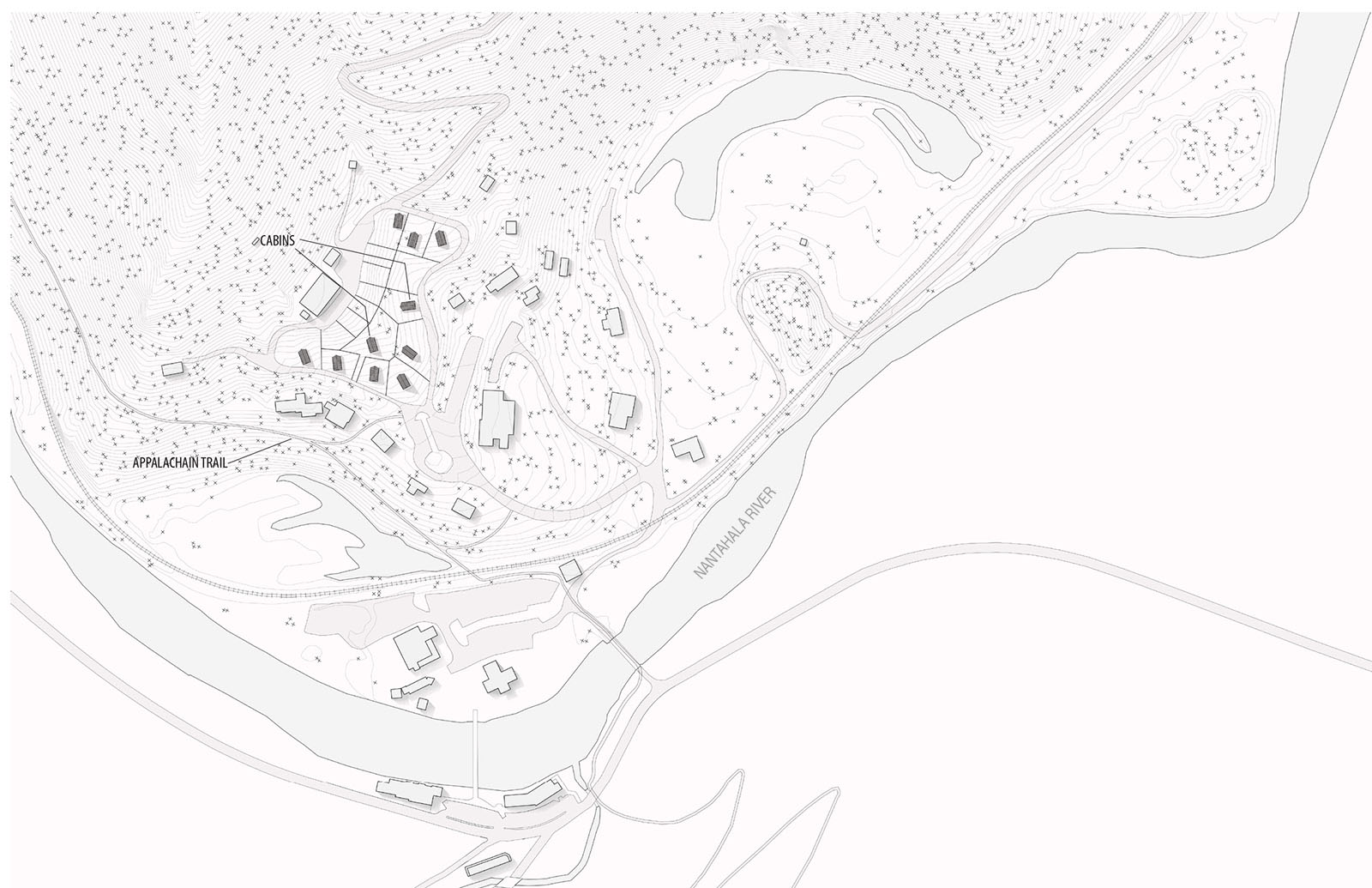
Master Plan
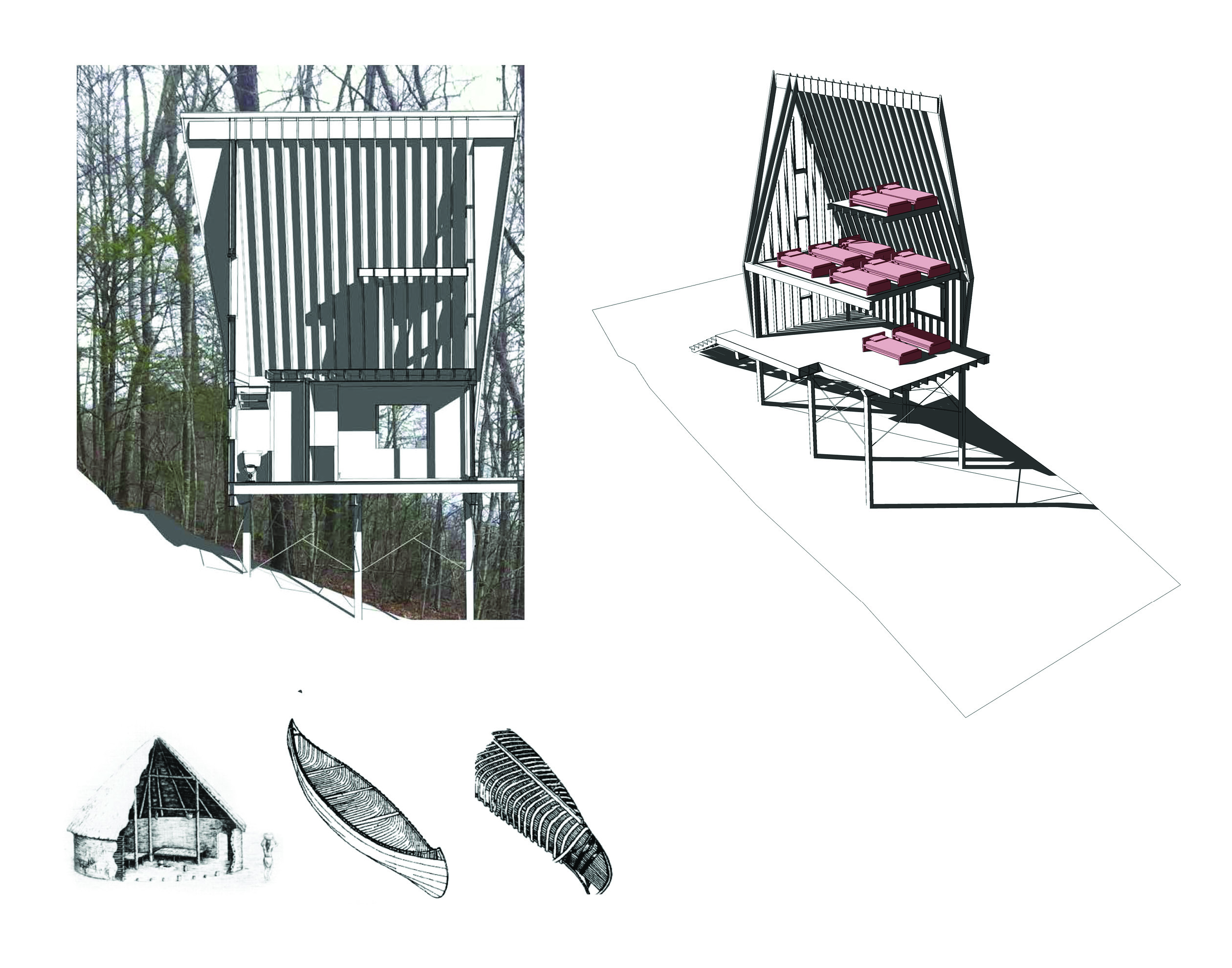
Concept Diagram
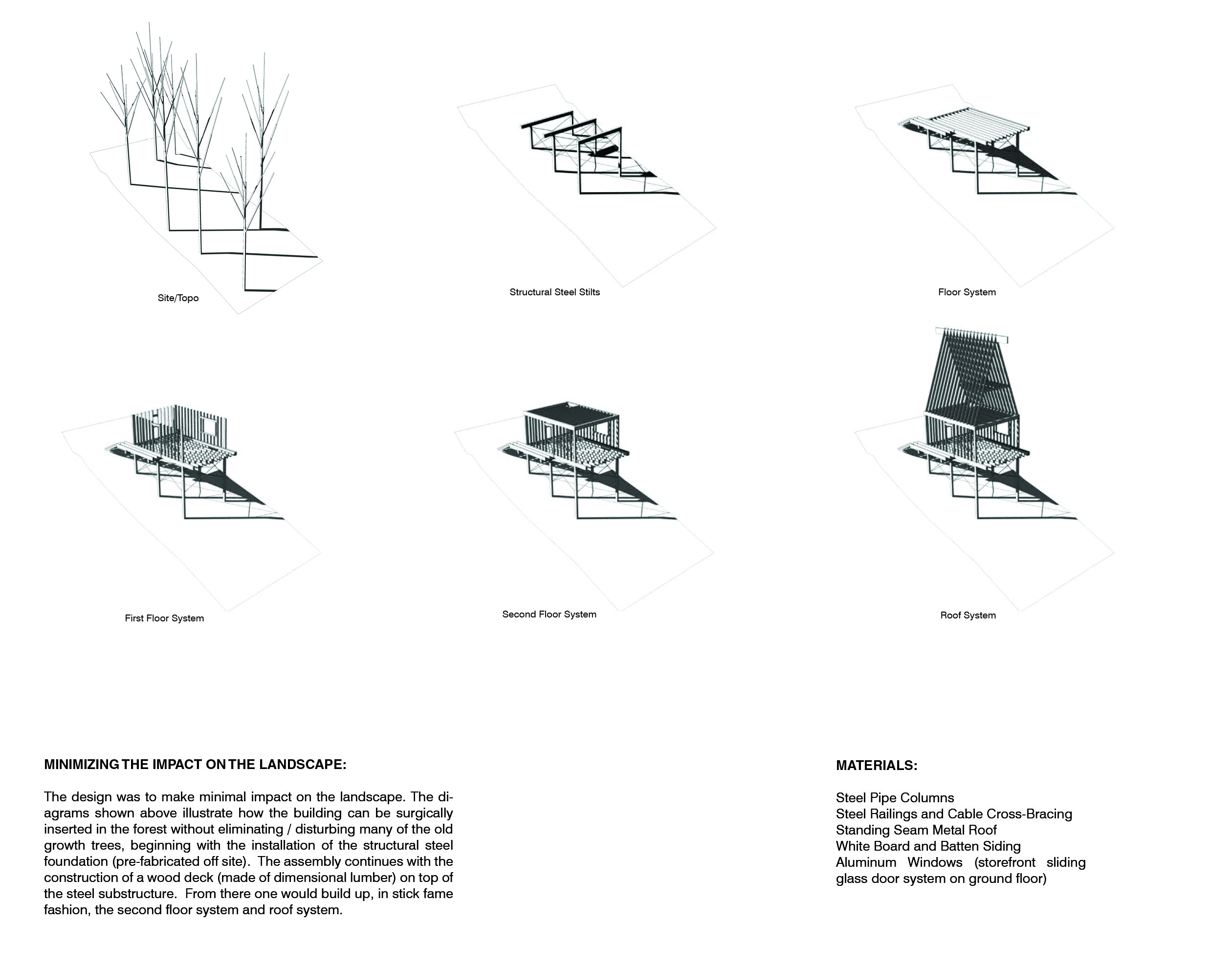
Minimizing the Impact on the Landscape
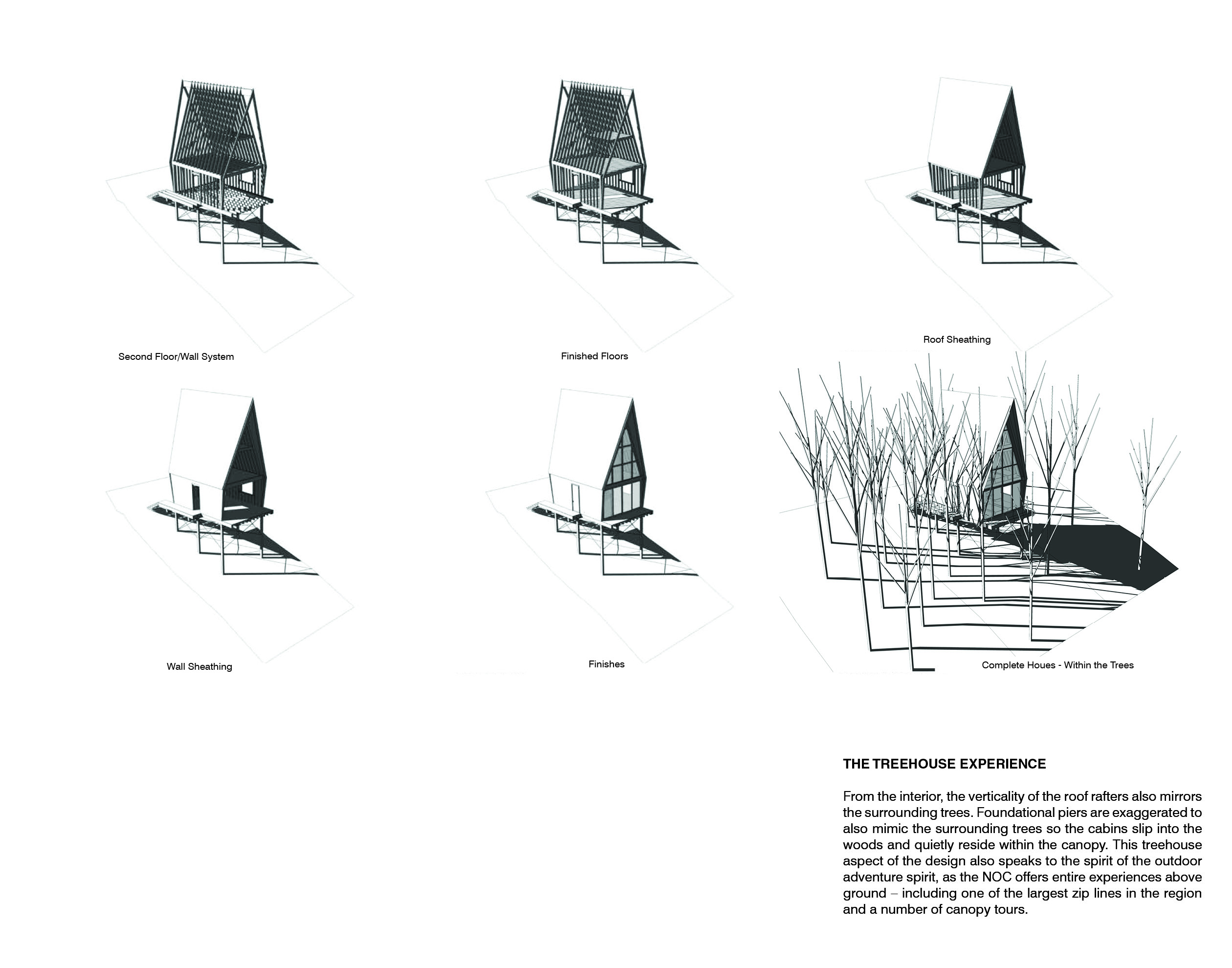
Minimizing the Impact on the Landscape
